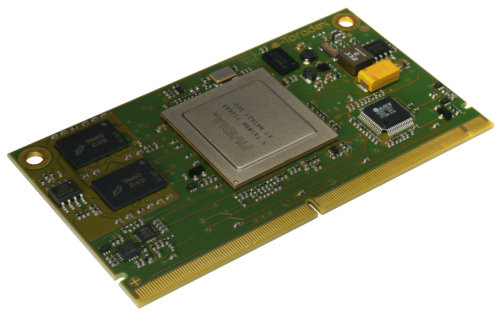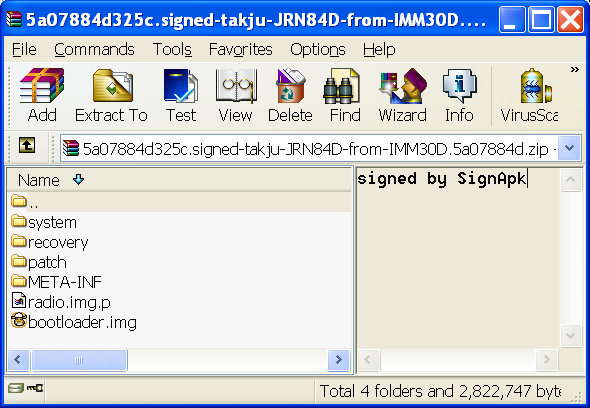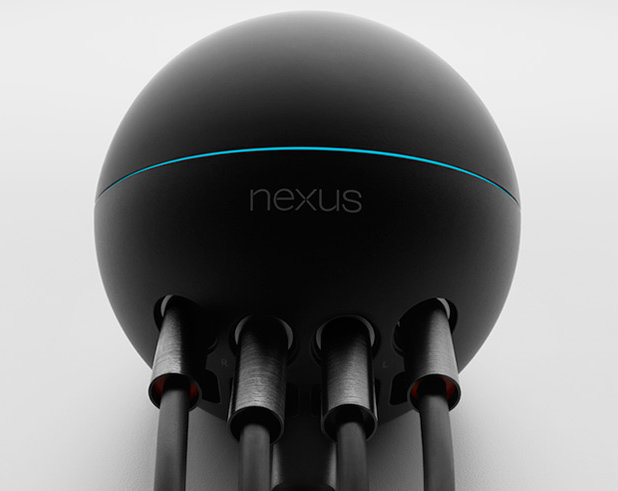Last month, Toradex released the preliminary specification for Apalis, a Computer on Module (CoM) architecture. Although the Apalis specification has been initially designed with ARM based processors in mind such as the Nvidia Tegra, Freescale i.MX and Texas Instruments OMAP processor families, it aims at being device and chip architecture independent. The Apallis specification defines the following: Interface Specifications: Signal Naming Convention – Rules to name pins (e.g. VCC, PWM1, PWM2, ) which are used for all modules. Signal Definition – Details about the pins named above Physical Pin Definition and Location Mechanical Specifications: Mounting and Fixation Module Size – Standard: 82 x 45mm | Extended: 82 x 56mm Pin Numbering – There is a total of 321 pin numbers (but a few less actually pins) Electrical Specifications: Power Supplies Power Control Back Feed Protection This specifications also defines mounting mechanisms for active cooling (e.g. heat spreaders) in case those […]
Amahi 6.1 for Ubuntu 12.04 Released
Amahi has just announced the release of Amahi 6.1, Ubuntu Edition, an Home Digital Assistant (HDA). Amahi used to only work for Fedora and this is their very first stable release for Ubuntu 12.04. The key features of Amahi 6.1, Ubuntu Edition include: Greyhole 0.9 (storage pooling technology) Reliability fixes and updates New look Support for 32 / 64-bit Desktop and Server versions of Ubuntu Improved cloud storage with Amahi Sync Preliminary support ARM platforms such as PandaBoard and BeagleBoard One-Click App installs via Amahi’s application store If you want to get started with Amahi, you’ll have to register (and get an install code), and follow a few command line instructions. The instructions are the same to install on ARM platforms (assuming you already have Ubuntu 12.04 running), but Amahi developers recommend to install it to an hard drive instead of an SD card for performance reasons. They are also […]
Mozilla Renames Boot 2 Gecko to Firefox OS and Partners with ZTE & TCL
Mozilla announced it would rename its Boot 2 Gecko (B2G) HTML5 mobile operating system to Firefox OS, and that ZTE and TCL (under the Alcatel brand) would manufacture the first devices running Firefox OS using Qualcomm Snapdragon Processors. The first devices should be available early 2013, at first in Brazil through Vivo, Telefónica’s commercial brand. The company also said that telecom operators such as Deutsche Telekom, Etisalat, Smart, Sprint, Telecom Italia, Telefónica and Telenor are planning to sell Firefox OS based smartphones. The platform is said to be optimized for entry-level smartphones thanks to the removal of unnecessary middleware layers among other things. This should allow mobile operators to provide low-cost handsets with “richer experiences” for the developing markets. Firefox OS will be fully open source and the reference implementation of the required Web APIs is being submitted to W3C for standardization. Internally, the project still appears to be referred to […]
Linaro 12.06 Release with Kernel 3.5 and Android 4.0.4
Linaro has released version 12.06 based on Linux Kernel 3.5-rc3 and Android 4.0.4 (r2.1). This release brings further multimedia enablement for Android as well as some improvement to perf for Android, improved instructions & scripts for multi-arch on Ubuntu, and lots of little improvements and bugs fixes. Here are the highlights of the release: Android Multimedia enablement on AOSP, patches are in review. Most of the benchmarking applications have been automated via Monkeyrunner, working on PandaBoard and Snowball. Update panda-ics-gcc47-tilt-tracking-blob build to the TI LT 3.4 kernel. USB camera preview and still capture forward ported to tilt-tracking. 3D graphics and multimedia working on tilt-stable. IOMMU for Origen’s Multi format codec (MFC) enabled. IOMMU for Origen’s FIMC enabled. (FIMC stands for Fully Interactive Mobile Camera, and it’s used for camera input). Snowball upgraded to Android 4.0.4. Cortex strings landed in Linaro Android and submitted to AOSP (https://android-review.googlesource.com/#/c/38031/). This is part of […]
Mediatek Unveils MT6577 Dual Core Cortex A9 Application Processor
MediaTek has announced the availability of the MT6577, a dual-core Cortex A9 application processor with a PowerVR Series5 SGX GPU that targets sub-$200 smartphones. The successor of MT6575 single core Cortex A9 mobile processor also includes MediaTek’s 3G/HSPA modem. The processor supports Android 4.0, and the company claims browser performance improvement by up to 40% compared to single-core platforms. The MT6577 also supports 8MP camera sensors, can handle 1080p video playback and has the ability to support HD720 (1280×720) resolution displays. The platform also embeds MediaTek 4-in-1 connectivity combo that provides 802.11n Wi-Fi & BT4.0 connectivity, GPS and FM. The MT6577 is pin-to-pin compatible with MT6575, so handset manufacturers can just use existing designs to upgrade to dual core, or design a single PCB with both single and dual core handsets. The first smartphones featuring MT6577 should be available in Q3 2012. That’s all information I have for now. Jean-Luc […]
Download Android 4.1 Jelly Bean Update for Galaxy Nexus Smartphone
Slashgear has reported that some people have found Android 4.1 update for Google Nexus on Google’s servers before the official release next month. You can download it here. This is a leak, so it’s not 100% sure that it would work as expected, but it is said that it’s the same as the one installed on the Google Galaxy Nexus smartphones given away to all Google I/O 2012 participants. Via: Slashgear Jean-Luc Aufranc (CNXSoft)Jean-Luc started CNX Software in 2010 as a part-time endeavor, before quitting his job as a software engineering manager, and starting to write daily news, and reviews full time later in 2011. www.cnx-software.com
Google Launches TI OMAP4460 Powered Nexus Q Media Player
Beside their first tablet and Android 4.1, Google also announced Google Nexus Q media player running Android 4.0 (ICS), and powered by Texas Instruments OMAP4460 processing with 1 GB RAM and 16 GB Flash. Here are the specifications of the device: CPU – Texas Instruments OMAP 4460 dual core Cortex A9 @ GHz + PowerVR SGX540 GPU System Memory – 1GB LPDDR RAM Storage – 16GB NAND flash memory Micro HDMI (Type D) TOSLink Optical audio (S/PDIF) 10/100BASE-T Ethernet (RJ45) Wireless Connectivity: Wi-Fi 802.11a/b/g/n Bluetooth NFC Micro AB USB (for service and support) Banana jack speaker outputs Amplifier – 25W class D (12.5 watt per channel) Power Supply – Integrated 35W switching power supply Dimension – 116mm (diameter) Weight – 923 grams The device also features a rotating top dome volume control, a capacitive touch sensor for mute, 32 RGB perimeter LEDs and 1 RGB LED for mute indicator, and […]
Google Nexus 7 Android 4.1 Tablet Features Nvidia Tegra 3 Processor
Google announced their very first tablet at Google I/O called Google Nexus 7 (but manufactured by Asus). The device runs the latest Android 4.1 (Jelly Bean) OS, is powered by Nvidia Tegra 3 quad-core Cortex A9 processor and comes with 1 GB RAM, and 8 to 16 GB NAND flash depending on the model. Here are the specifications of the Google Nexus 7: CPU – Nvidia Tegra 3 Quad core Cortex A9 @ 1.2 GHz Memory – 1GB RAM Storage – 8 or 16 GB Flash Display – 7” 1280×800 HD IPS display (216 ppi) Connectivity WiFi 802.11 b/g/n Bluetooth Camera – 1.2MP front-facing camera Sensors – Accelerometer, Magnetometer and Gyroscope Misc – Microphone, speaker, NFC and GPS Battery – 4325 mAh (Up to 8 hours of active use) Weight – 340 grams Size – 198.5 x 120 x 10.45mm The device only has a power, vol-/+ buttons, an headphone […]









